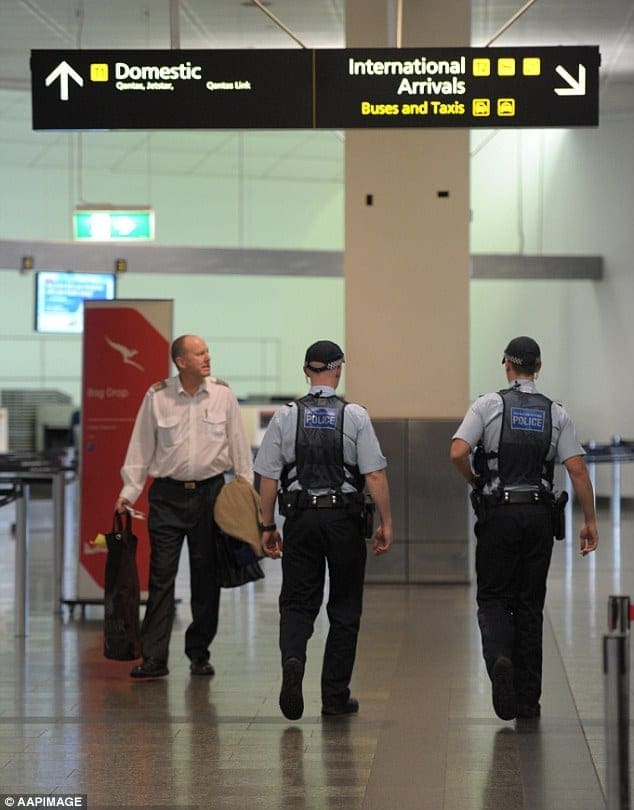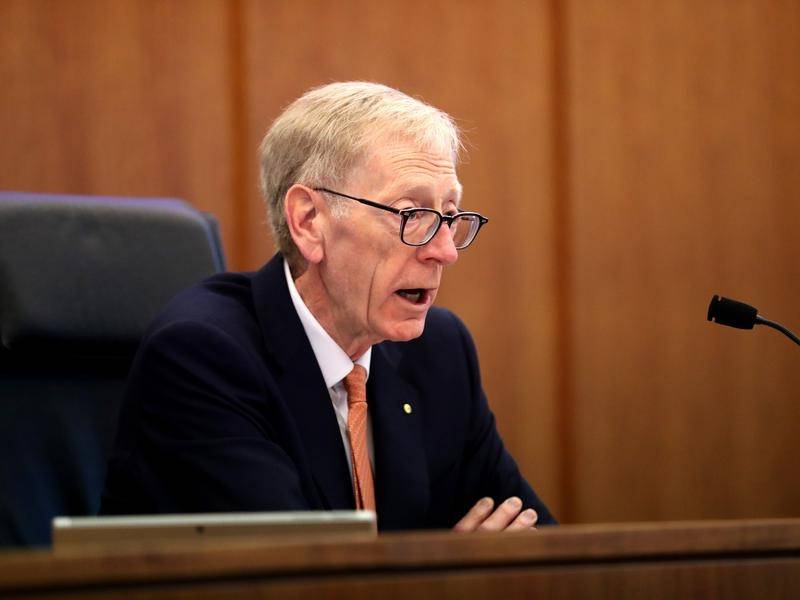New legislation has been passed that prohibits foreigners who have been convicted of domestic violence from entering Australia. The Home Affairs Legislation Amendment (Miscellaneous Measures) Act 2019 has amended the Migration Act 1958 to focus on perpetrators of violence against women and children. Immigration Minister David Coleman said;
“Wherever the offence occurred, whatever the sentence, Australia will have no tolerance for domestic violence perpetrators.”
This legislation was passed as the previously existing laws only allowed the Government to revoke Visas of foreigners who failed a character test or who had spent 12 months in jail.
Though previously in 2015, singer Chris Brown was refused an Australian Visa for his planned concerts due to his 2009 conviction of assault and threatening to kill his then-girlfriend Rihanna, it was not common practice for the every-day person to be refused a Visa for Domestic Violence convictions.
However, we are pleased to note that this has now been written into the Migration Act to protect Australians and focus on reducing the number of Domestic Violence incidents in Australia.
If you have been affected by domestic violence, or have any queries in relation to the issues raised in this article, please do not hesitate to contact us on (02) 8917 8700, or fill out the enquiry box and we will get back to you ASAP.
Our free legal workshop on 15-16 March will cover domestic violence issues. Please consider coming along, and registering here - you can remain anonymous.
The first hearing of the Royal Commission into Aged Care Quality and Safety has revealed a myriad of problems suffered by both residents and staff in the sector. Many older Australians are afraid of going into residential aged care due to the lack of care. The Commission has revealed that there were 3,733 reportable assaults in nursing homes in 2017-18, not including residents assaulting each other.
The family of Bob Spriggs, a former resident of the Oakden nursing home in Adelaide (which has now closed down) has spoken out about the lack of transparency at the nursing home. Spriggs died due to suffering from overmedication, severe bruising, dehydration and pneumonia. The family is calling for a national database of abusive workers.
The lack of qualifications, adequate funding and under-staffing into the aged care sector is a systemic issue that must be targeted. With Australia’s ageing population, it is expected that the aged care workforce will need to triple by 2050 to cater for the growing demand. According to Deborah Parker, ageing policy chair of the Australian College of Nursing, the minimum requirement to work in a nursing home is a six-month TAFE course. With all the problems surrounding the sector, this does not seem to be enough. There is a need for more funding into wages and training
Under-staffing is another issue. Health Services Union national president Gerard Hayes has said that it is not uncommon for one worker to be looking after 25 residents simultaneously, many of which have different needs, from going to the bathroom to needing to be fed food. Dementia is on the rise with 436,000 Australians suffering from the incurable and untreatable disease today. 80% of dementia patients were being given a psychotropic drug that should only be used as a last resort because the drugs put senior patients at a greater risk of stroke, pneumonia, disability and even death. Dr Harry Nespolon of the Royal Australian College of Practitioners highlighted that around 90% of dementia patients have a behavioural issue, which can put staff and other residents at risk. Over-medication seems to be the easy way of for staff caring for dementia patients.
The next hearing will be on Mach 18 in Adelaide with a focus on home care.
Submissions from the public are being accepted until June 2019 at the Royal Commission's website.
If you or someone who know has been affected by the issues raised in this article, or have any queries relating to the issues featured here, please do not hesitate to contact us on 02 8917 8700 or fill out the enquiry box and we will get back to you ASAP.
Several drug-related deaths at festivals in 2018 and 2019 have reignited the debate around pill testing. One of the most dangerous things about taking recreational drugs at a music festival is the risk of consuming dangerous substances alongside the drugs. Also, uncertainty about the strength and purity can leave people unsure about how much to take, and thus lead to accidental overdoses.
Groups such as Pill Testing Australia, the Noffs Foundation and Harm Reduction Australia are urging the NSW Government to introduce testing. Even the former Australian Federal Police Commission Mick Palmer is supportive of pill testing.
Why would a music festival need pill testing?
Studies have shown that the majority of people choose not to take their drugs if it is found there is a dangerous substance mixed in it, that they did not previously know about. This leads to a reduction of drugs with dangerous mix-ins, as people are less likely to return to buy from the same supplier, and the market in general becomes safer. A 2018 analysis by Durham University, of the UK’s first pill testing trial, found a 95% reduction in hospital admissions after pill testing.
The ACT government has confirmed it will have a second trial of pill testing at ‘Groovin the Moo’ in April. Last year the program found that more than half of the drugs were contaminated with a dangerous substance such as paint fillers, antihistamines, toothpaste, dietary supplements and oil. Of the 85 substances tested, more than half of the drugs that people believed to be MDMA, were found to be contaminated with other chemicals (read the report here). The pill testing process at ‘Groovin the Moo’ is that festival-goers queue outside a tent, and sign a waiver, then speak to a peer educator who warns them that pill testing doesn’t guarantee the safety of the drugs. Then a sample of their drug is tested by a chemist, and the festival-goer has another consultation with a peer educator. A major advantage of pill testing is that testing booths are able to give information and safety warnings to users who pass through them.
Pill testing is available in other countries such as Austria, the Netherlands, Switzerland, Belgium, Spain, France and Germany. The volunteer group KnowYourStuffNZ offers pill testing at festivals in New Zealand, and are supported by the New Zealand Drug Foundation.
The government’s position
The state government’s position is that pill testing will send the message to young people that it is okay to take illicit drugs. NSW Premier Gladys Berejiklian has said pill testing would give people a ‘false sense of security’. (This is a risk however, that appears to be adequately dealt with by the discussions with peer educators explicitly warning festival-goers that there is no guarantee of safety.) NSW has also increased the penalties for suppliers of drugs to a maximum of 20 years.
This zero tolerance approach is clearly not working. The NSW Coroner is currently holding an inquest into five deaths at music festivals. Since these recent deaths, the Premier has said she would consider pill testing if there was evidence of its success. This is a softer stance than previously stated, but still ignores the plethora of evidence for the effectiveness of pill testing.
There is proof that harm-minimisation in the form of pill testing is more effective than a hard-line approach. An informed decision is safer than an uninformed one.
Slavery includes servitude, forced labour, forced marriage, debt bondage, as well as slavery-like offences such as other aggravated offences that inflict inhumane or degrading treatment on someone else, according to Division 270 of the International Criminal Code Act 1995. Under the Modern Slavery Act 2018 (Cth), businesses that are operating in Australia that have a turnover of $100 million are obligated to publish a modern slavery statement at the end of each financial year. They must do this because the object of the Act is to ensure businesses report on the risks of modern slavery in their supply chains and operations, because they want to make sure that the businesses do not use slave labour in their operations and supply chains. The Act also defines modern slavery to include people trafficking and child labour.
The Modern Slavery Act 2018 (NSW) also aims to combat modern slavery. Under this Act, businesses operating in Australia that have a turnover of $50 million are obligated to publish a modern slavery statement to the regulator. The Modern Slavery Regulations (which are yet to be released) will detail what the statement must include. Nonetheless, according to section 24(5) of the Modern Slavery Act 2018 (NSW) the modern slavery statement may include the:
- Businesses structure and supply chains;
- Due diligence processes - failure to do so will result in a fine of up to $1 100 000;
- The parts of the business and supply chains where there is a risk of modern slavery occurring, and the steps the business has taken to assess and manage that risk; and
- training about modern slavery provided to its employees.
The Anti-Slavery Commissioner has an online register where they document whether a businesses supply chains or other processes uses slave labour. This register can be accessed by the public in a bid to deter businesses from engaging in slave labour.
The first mandatory reporting year is 1 July 2019 – 30 June 2020. Hopefully greater transparency and scrutiny on businesses practices that involve modern slavery will result is better working conditions and greater freedom for all.
If you have been affected by modern slavery practices, or have any queries in relation to the issues raised in this article, please do not hesitate to contact us on 02 8917 8700 or fill out the enquiry box and we will get back to you ASAP.
A well drafted ‘Will’ can also be contested if one feels that they have been left out of the ‘Will’ or if they have not been adequately provided for their proper maintenance, education and advancement of life. The claim that they have on the estate is called the Family Provision Claim and these claims are very common in the current age of longer life expectancy, divorce, multiple partners, step children and blended families.
The time limit for an individual to apply for the claim is very crucial and is ‘12 months’ within the death of the deceased person, unless the Court orders otherwise.
A family provision claim can only be made by an eligible person as defined in section 57 of the Succession Act 2006 (NSW).
The following are few factors that the Supreme Court considers while accessing a family provision claim;
- If you are an eligible person as defined in section 57 of the Succession Act;
- The size of the estate of the deceased ;
- The applicant's financial circumstances and needs;
- Financial circumstances and needs of the other beneficiaries;
- Any other provision made for the applicant during the deceased’s lifetime.
- Any other factors that the Court deems fit.
The Court dives deep into the actual “need” for the applicant’s claim in the deceased’s estate in order to lead a comfortable life and that the applicant is not able to meet their financial requirements from the applicant's own resources.
If you think that you have been left out of a 'Will', and would like some advice about contesting an estate ('Will'), please do not hesitate to contact us on 02 8999 9837 or fill out the enquiry box and we will get back to you ASAP.
The general public usually assumes that the division of assets should be a 50/50 split between the parties who are separated and intend to finalise their financial relationship.
This is not always the case. The Federal Circuit Court and Family Court take into consideration various factors when determining a division of the matrimonial asset pool, which are as follows:-
1. The initial step would be to determine the net value of the matrimonial asset pool.
Whilst real estate is generally the most significant asset of the matrimonial asset pool, it is not the only asset. Other assets also include bank accounts, motor vehicles, real estate etc. Even personal items such as luxury handbags and jewellery, depending on the value, can be included, or a person’s share in a company, for example, a construction company.
Assets owned solely by a party, jointly with each other or even jointly with a third party are to be included.
The net value of the asset pool is to be determined. Therefore, liabilities, such as credit cards and finances secured over motor vehicles, are also taken into consideration. The total assets minus the total liabilities would equate to the net value.
Also, superannuation is also taken into consideration by the Courts. However, it is best that you seek legal advice from an experienced family lawyer in relation to the Superannuation Split.
2. Contributions made by each party throughout a marriage or de facto relationship are also taken into consideration.
These include financial contributions, such as one partner earning an income, and the non-financial contributions (or equitable contributions) made by a party in their capacity of a homemaker, such as caring for the children and carrying out the household chores.
3. Future Considerations.
The Court will also take into account future considerations, i.e. relevant future factors, including but not limited to:-
- Age and health of the parties;
- Income earning capacity of the parties; and
- Whether one party is to be the primary carer of the children.
4. Last of all, the Court has to determine whether the division is 'just and equitable'.
This decision is at the discretion of the Court and simply put, should the Court think that making a division, even if it is agreed upon between the parties, is unfair and inequitable, it may make an adjustment to the ‘disadvantaged party’ which it determines to be fair.
Once the Court takes into consideration of all of the above (and more) and essentially ‘balances out’ all of the relevant factors, it can make orders that it deems to be within the parameters each party is entitled to. The purpose of the division of the matrimonial asset pool is to finalise and sever once and for all the financial relationship of the parties so that they can move on their own separate ways without any further connection between them in relation to property.
This article is general advice and does not take into account your personal circumstances. It would be prudent to obtain legal advice in relation to your particular circumstances.
Our Firm is holding a legal workshop on 15 and 16 March 2019 and we will be discussing various issues including this topic and the best thing – it’s for free! Hence register your interest now by clicking here.
Following the banking royal commission, The Australian Securities and Investments Commission (ASIC) has spent over $100 000, in the hopes of rebranding itself as ‘respected’ and ‘accountable’. However, Australians have been left questioning whether this fresh rebranding was necessary, or rather, just another example of wasteful spending in the financial services industry?
According to ASIC’s senior executive leader, Matthew Abbott, the branding update would make ASIC’s materials more suitable for digital channels and hence, more accessible for Australians. The ABC has reported that more than $40 000 went to creative development and almost $60 000 was spent on design and asset development. This price is said to include new stationary templates, banners and the web design update for ASIC’s online homepage.
New logo, on the right. Old logo, on the left.
To the untrained (and possibly trained) eye, ASIC’s new logo looks nothing more than a bold new font and a downsized logo. It seems that the Australian public agreed, using social media to label ASIC’s branding as an ‘illegal’ and ‘laughable’ use of tax payer’s money.
Federal Labor MP Matt Keogh also criticised ASIC for being too soft on banks. ‘Instead of working to throw the book at the banks, they were concerned about the font that that book was written in,’ Keogh told the ABC.
“Strong. Accountable. Firm/Fair.” That is the image that ASIC wanted to project through a transformation of their visual identity. However, the simplistic nature and staggering cost of the regulators so called ‘re-branding’, has quite obviously had the opposite result on the general public.
We wonder whether re-branding was the best way to go for ASIC, or rather, was it merely a waste of your hard-earned tax payer money? Rather, could the money have been used to employ additional investigators to target the misconduct of banks or mortgage brokers?
The Royal Commission into Misconduct in the Banking, Superannuation and Financial Services Industry was announced on 30 November 2017, and we have been following it closely ever since. Click here to read our earlier blog post on the Commission.
On Monday, 4 February 2019, the long-awaited final report was released. The report follows Commissioner Kenneth Hayne’s calls for ‘change’ in the financial services industry.
The recommendations made in the final report have focused on ending the unsolicited sale of financial products, banning conflicted remuneration earned by intermediaries, and the better enforcement of legal standards.
Some of the key recommendations include:
Banks:
- An expansion of the Banking Executive Accountability Regime laws to track those responsible for any breach of lending laws
- The imposition of fines on mortgage brokers who fail to act in the best interests of an intending borrower
For farmers and those with poor English skills:
- The establishment of a national scheme to mediate farm debts
- A ban on banks from charging default interest on loans secured by farm land in an area declared to be in draught or subject to other natural disasters
- Amendments to the banking code of conduct, so that people in remote areas, or those with poor English skills, can access and conduct banking
Financial Advice:
- The creation of a new disciplinary system for financial advisors which requires all advisers to be registered, and the creation of a single disciplinary body to oversee this system
- All banking licence holders be required to report ‘serious compliance concerns’ about individual advisors to ASIC on a quarterly basis
Superannuation:
- A single default super fund be applied for all workers
- Heavy-handed selling of superannuation should be abolished
Insurance:
- The banning of the heavy-handed selling of insurance
- Funeral expense insurance policies should be defined as a ‘financial product’, bringing it under the oversight of ASIC
For those affected by the finance sector:
- A compensation scheme should be established for those unable to receive financial recompense from their institution
After the report?
Justice Hayne has referred major companies, including Suncorp, ANZ, NAB, Allianz and ClearView, to regulators for possible criminal or civil action. It is the intention that through an increased scrutiny of these major financial service providers, consumers will be better protected against misconduct.
If you have been a victim of a financial service’s misconduct, or have any queries relating to issues featured in this article, please do not hesitate to contact us on 02 8917 8700 or fill out the enquiry box and we will get back to you ASAP.
The Honourable Kenneth Hayne AC QC, during the Royal Commission
The Royal Commission into Misconduct in the Banking, Superannuation and Financial Services Industry was announced on 30 November 2017, and we have been following it closely ever since. Click here and here to read our other blog posts on the Commission.
After reviewing over 10,000 submissions from the public, and over 69 days of public hearings, the Commissioner Kenneth Hayne submitted his final report to the Governor-General on Friday, 1 February 2019. Today, at 4pm, the details of the final report will be made public.
While we don’t yet know what will be in the report, the Commissioner in charge of the Royal Commission has said the dishonesty and greed are to blame for the suffering of many people around Australia due to the misconduct of banks. The interim report released in September last year said that ‘short-term profit was pursued at the expense of basic standards of honesty’ and cited examples of banks charging fees for deceased estates.
What will be the effects of the Final Report?
The Commission itself can’t press charges or give compensation to victims of misconduct. However, it can make recommendations to the Office of the Commonwealth Director of Public Prosecutions, who made decide to prosecute the misconduct.
It is likely the Final Report will recommend stronger regulation of the current laws, rather than changes in the law itself. The Commissioner has strongly criticised ASIC (Australian Securities and Investments Commission) and APRA (Australian Prudential Regulation Authority) for failing to properly monitor banks and financial institutions, and letting the conduct go unpunished. One change may be greater funding for these regulators, allowing them to monitor institutions more closely and take action when they sniff out misconduct.
Recommendations in the Final Report may also address how the banks pay staff, including their senior executives such as CEOs. There will also be recommendations regarding superannuation and insurance. One possible recommendation is whether insurance companies can 'cold call' vulnerable people to sell their product.
What will this mean for you?
We foresee there will be greater transparency around the fees and charges that you are paying, and why you are paying them. Some people have forecast that obtaining credit and loans may become more difficult, as banks become more cautious.
Ultimately the Royal Commission has highlighted how much misconduct has been occurring in the financial services industry. Consumers must be wary and scrutinise their own dealings with banks, superannuation and insurance services, and contact someone if they feel there has been misconduct.
If you have been a victim of a financial service’s misconduct, or have any queries relating to issues featured in this article, please do not hesitate to contact us on 02 8917 8700 or fill out the enquiry box and we will get back to you ASAP.








